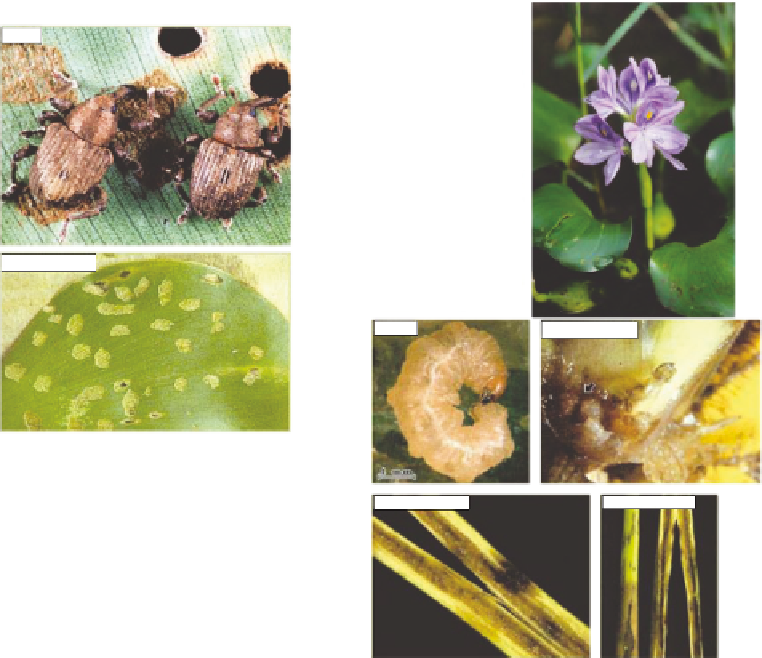Environmental Engineering Reference
In-Depth Information
Adult
Adult damage
(a)
Larva
Larval damage
(b)
1 mm
Larval damage
Larval damage
(c)
FIGURE 17.15
Water hyacinth (a) (From USDA Agricultural Research Service Invasive Weeds Research
Unit) and water hyacinth weevils (
Neochetina
sp.) (b,c). (b) Adults of
N. eichhorniae
(top right) and
N. bruchi
(top left) and an example of feeding damage produced by both adults. (c) Grub-like
Neochetina
larvae and
damage within the plant crown (top right) and within the leaf petioles (bottom). (b,c: From Grodowitz, M.J.,
Freedman, J.E., Jones, H., Jeffers, L., Lopez, C.F., and Nibling, F., Status of waterhyacinth/hydrilla infesta-
tions and associated biological control agents in Lower Rio Grande Valley cooperating irrigation districts,
U.S. Army Corps of Engineers, Vicksburg, MS, 2000.)
United States to date, and the conditions for their effectiveness are not totally understood (Chilton
2004).
17.6 FISH AND FISHERIES MANAGEMENT
Often, as long as the lake or reservoir is not “unsightly or odorous,” the perception by the public as
to the health of a lake or a reservoir is based to a large degree on its ishery, where ishing is one
of the more common and widespread uses of lakes and reservoirs. Fisheries management is then a
critical component of lake and reservoir management.
The overall goal of isheries management is to “produce sustainable biological, social, and eco-
nomic beneits from renewable aquatic resources” (Lackey 2005). Historically, the target of isheries
management was to maximize sustainable populations of some speciic target ish of recreational
or commercial value, such as largemouth bass, walleye, or others. Management goals may include
(Baker et al. 1993):
•
Maximizing yield
•
Maximizing catch rates per unit of effort




Search WWH ::

Custom Search